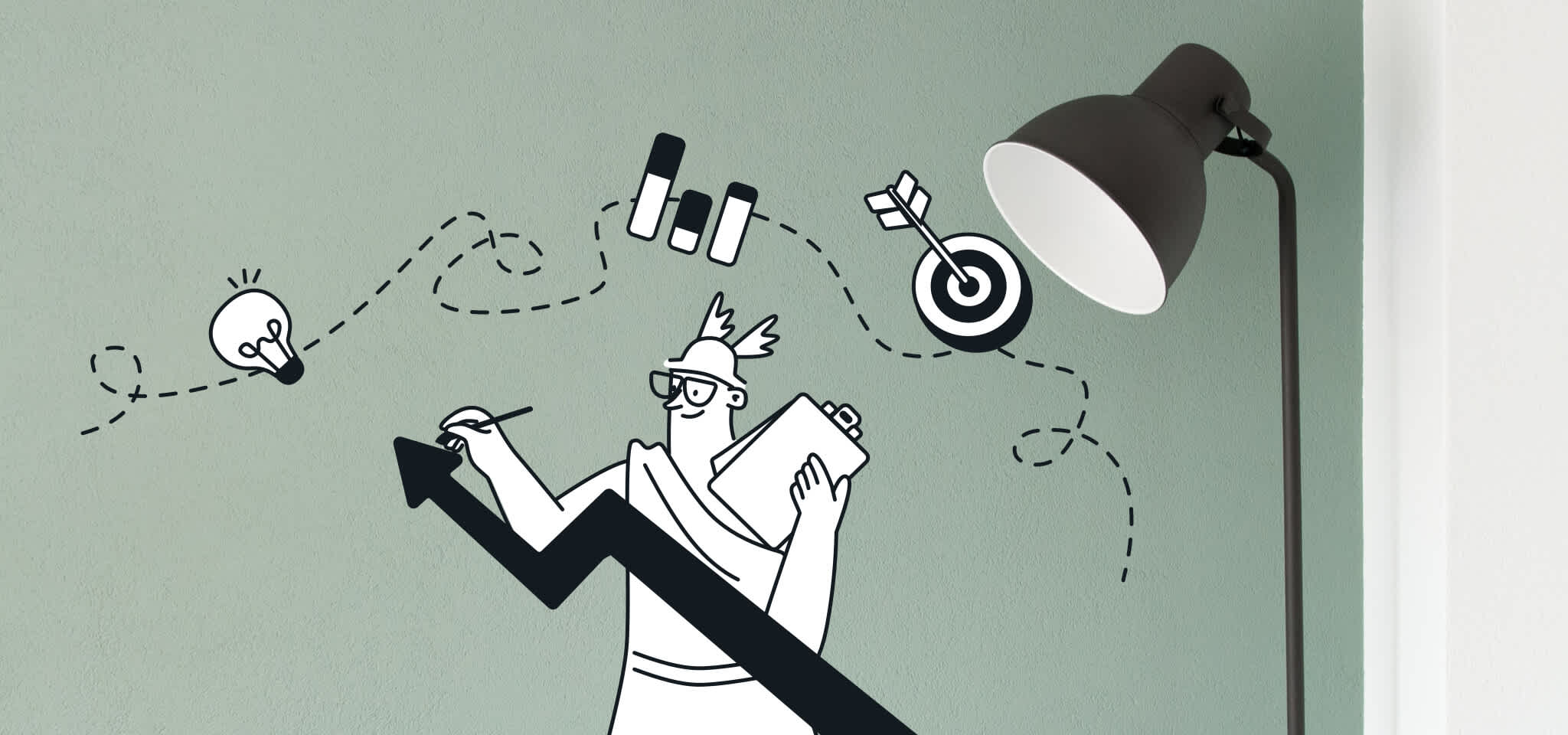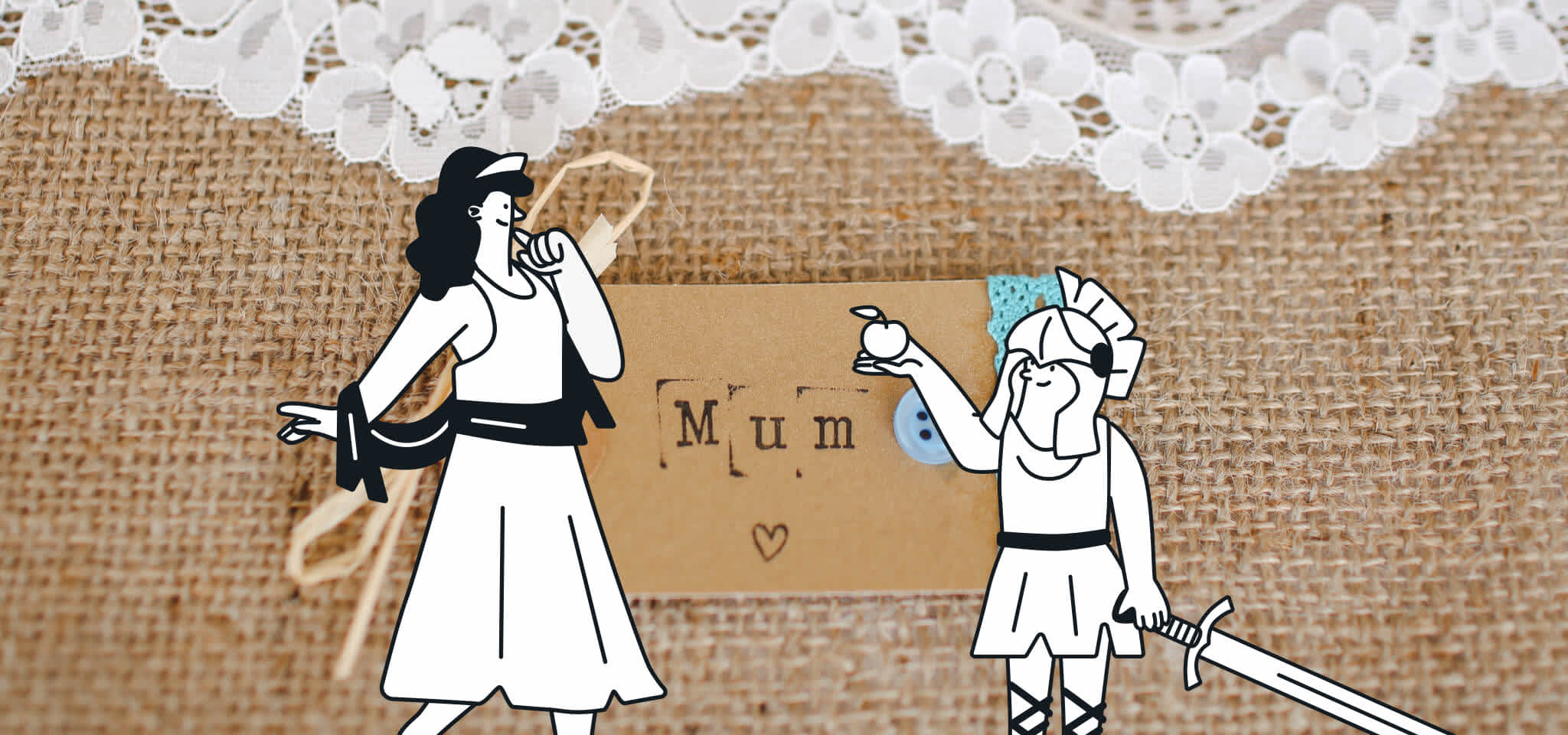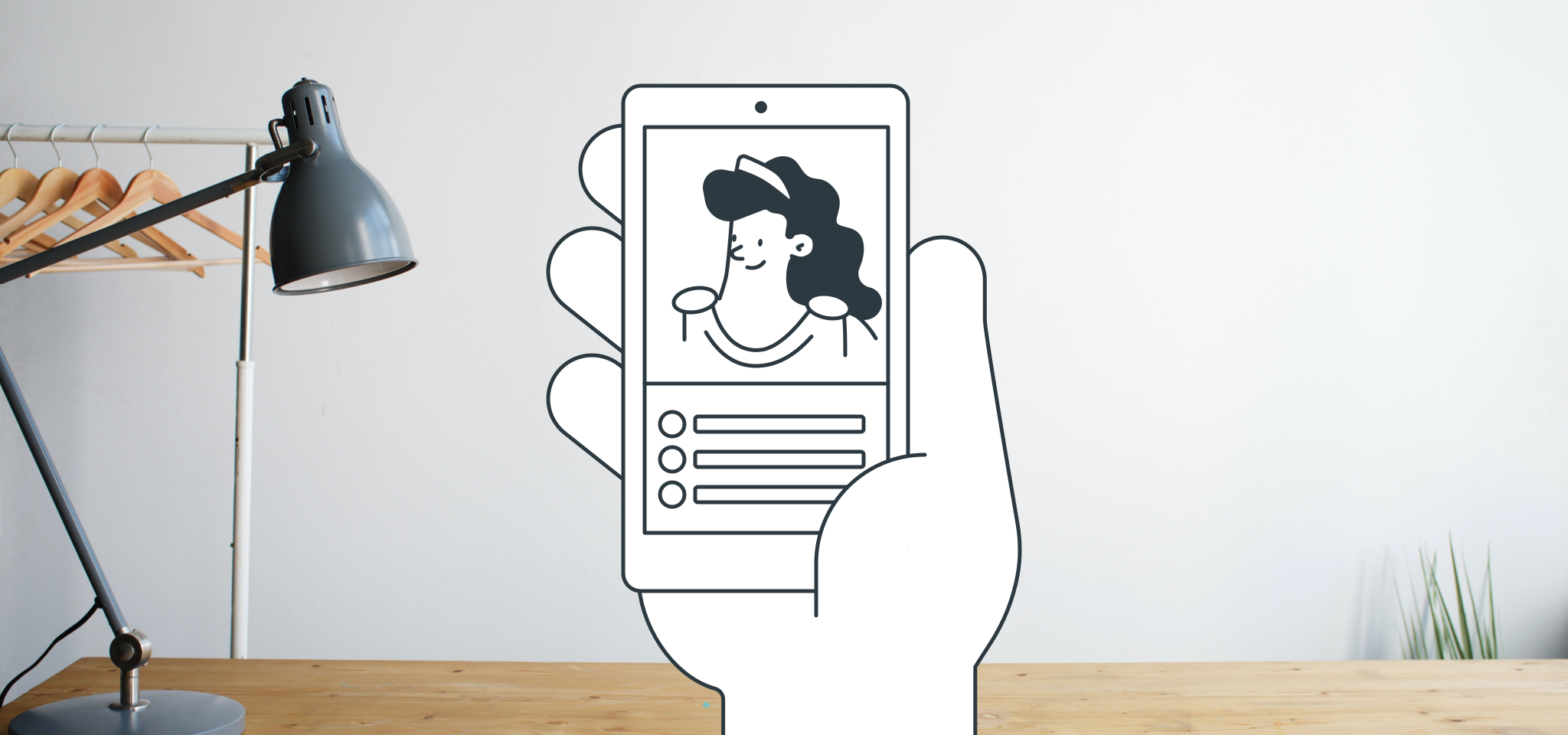Marketing
Email and SMS: Navigating customer communications in an omnichannel universe
Communicating with clients on their preferred channels is a customer-centric approach that results in better engagement, higher responsiveness, and actual relationship building opportunities for your brand.

PUBLISHED ON
With an estimated 4.6 billion smartphone users worldwide and an open rate of 97%, it’s easy to see why SMS is proving a popular addition to email in customer communications strategies. Combining the power, reach, and engagement of both channels gives marketers one of the most potent channel mixes available today.
However, many marketers are either unaware of the capabilities or unprepared to bring SMS into the fold. And this just won’t do – especially not for Sinch Mailjet clients that have the full power of SMS at their fingertips through our comprehensive Sinch portfolio.
So, we decided to break down one of the highlight sessions from this year’s Email Camp – our annual two-day email marketing event. The panel “Email and beyond” featured Julie Neumann, SVP Marketing (CPaaS) at Sinch, and Kate Gerwe, CMO (SaaS) at Sinch.
Together, they looked at the importance of going omnichannel, including what channels to utilize, the key benefits and best practices to follow, how to implement a long-term strategy, and why SMS could be a game changer for your businesses.
If you missed the session or just want to go over the insights again, we’ve got you covered. Read on!
Table of content
#1 Increased reach
#2 Compatible date sets
#3 Robust outreach and segmentation
#4 Increased engagement and satisfaction
Common FAQs for combining SMS & email
Q: What’s the best time to send an SMS message?
Q: Are privacy rules different for different communication channels like SMS or mobile messaging apps?
Q: What's the recommended character count? Is it recommended to use bitly for shorter link characters and add UTMs to the links?
Q: For B2C, what are creative ways to leverage replies and incorporate two-way communications?
Q: Do you have any advice or thoughts on how to integrate messaging outside of SMS (onsite, paid media, newsletters, and email marketing)?
Q: SMS appears to be widely adopted in B2C. Any success stories for B2B?
Q: Do you think MMS would work in B2B marketing? If so, how would you implement it? Are pictures really that necessary?
Q: Are there certain industries where SMS isn't successful?
Q: In a recent campaign to get feedback, we had a 94% response rate from SMS and only 6% from emailing. Do you think I should keep investing in emailing or let it go?
Q: Should we add a callable phone number to texts for SMS programs that don’t have call forwarding?
Going beyond email: Bringing an omnichannel approach to your customer communications
Let’s be honest – brand communications have changed a lot over the last few years.
Not too long ago, discussions around how we communicate with customers would barely have got a look in. Brands controlled a unilateral, one-way system of communication. As Morpheus famously said, “They are the gatekeepers. They are guarding all the doors, they are holding all the keys.”
But times have changed, and a single channel no longer cuts it. Customers now expect to be contacted on their terms, when it suits them, and on their preferred channels. Yes, it’s very much an omnichannel game now.
Don’t trust us? Check out this data Julie and Kate shared during their Email Camp session:

As you can see, a top priority of customers is that brands be available. We live in a world of instant gratification which means customers expect fast, responsive communication from whoever they are dealing with.
That communication needs to be personal, too. Customers want to communicate with businesses as if they were dealing with friends or family. We don’t tend to do that just via email now, do we?
Ultimately, customers want to get value from their brand communication. We’re living in a fast-paced world, and we’re all bombarded daily by brands. So, it’s time to face the truth: If your communication doesn’t stand out and doesn’t add immediate value to customers, you’ll be ignored.
SMS and email: A match made in heaven
So, we’ve established that omnichannel communication is a good thing. We’ve convinced you to consider incorporating another channel. But why should SMS be the channel you consider adding?
You’ve seen the data on smartphone penetration, and you’ve probably experienced it yourself – nowadays, it’s hard to imagine life without our phones.
If you had to take a stab at how many times people checked their cell phones a day, what would be your guess? Maybe 30, or 40, right? Well, try 140+ times per day. What’s more, the engagement of SMS outperforms all other marketing channels with 95% of people reading and responding within three minutes.
Deploying a combination of email and SMS in your omnichannel communication strategy can significantly enhance the effectiveness of your outreach and engagement with your audience. In fact, according to Braze, a cross-channel activation strategy combining email and messaging leads to a 6.6X increase in purchases per user and a 46% increase in repeat buyers. A combination of SMS and email provides versatility by accommodating different communication preferences.
While email is ideally suited for more formal communications or complex campaigns, SMS offers a quick and immediate way to reach individuals who prefer concise, direct messages. So, by offering both options, you’re effectively catering to a broader range of customer preferences, ensuring your messages resonate with a more diverse audience.
This is particularly true when it comes to the holiday season, as the data from our latest survey shows. During Email Camp 2023, Greg Zakowicz, Sr. Ecommerce Expert at Omnisend, delivered a fantastic session on holiday email marketing, and this was one of the key points he brought up.
Black Friday was the highest converting day for both email and SMS campaigns in 2022. However, Saturday, November 26 (the day after Black Friday) was the highest order day for SMS, yet it didn’t even break the top five for email marketing.
Curious, right? It just goes to show why a combined, omnichannel approach is so important for your communications strategy. Learn more about how to leverage both channels during the holiday season in Greg Zakowicz’s Email Camp 2023 session: Black(hole) Friday and beyond: Launching a winning holiday email marketing strategy.
Still not convinced? Take a look at how one of Sinch’s largest clients, a US telecom leader, benefited from integrating email and SMS:

Simply by adding email and multimedia messaging service (MMS) to their existing SMS strategy, the telecoms provider saw a 260% increase in conversion rates and 20% decrease in opt-outs. Not a bad result, right?
What are the benefits of an email + SMS cross-channel communication strategy?
During their Email Camp 2023 session, Julie and Kate went beyond the big picture numbers to analyze why SMS and email form such a formidable combination. What makes it one of the most effective channel mixes available to marketers?
They both concluded that the four most important benefits to integrating email and SMS are:
Increased reach
Compatible data sets
Robust outreach and segmentation
Increased engagement
Let’s quickly run through each of them.
#1 Increased reach
As marketers, we know that not all messages are read in the same way or at the same time.
Combining email and SMS allows brands to improve their reach and response rates. Basically, what that means is that by using both channels, you increase the chances of your messages being seen and responded to promptly.
For example, when it comes to sending time-sensitive announcements or promotions, SMS can be particularly effective, ensuring that your audience receives and acts upon important information in a timely manner.
Kate shared a great example of this during the session from Maaco Midwest, an auto repair franchise. After struggling to scale their lead nurture strategies, Maaco Midwest turned to Sinch MessageMedia to integrate texting into the sales cycle, diversifying their communications strategy. This approach gave the Maaco Midwest team that extra set of hands they’d been looking for — and another way to keep the conversation going on their customers’ preferred terms.
The results? Combining phone calls, email, and SMS has resulted in greater engagement on all channels.
#2 Compatible date sets
Another benefit of combining SMS with email is that there’s a lot of synergy between different customer data sets. What we mean by that is that compliance and anti-spam laws are similar for both channels, meaning one can easily bolster the other. This allows for more robust outreach and fine-tuned customer segmentation.
For example, if a customer shows an interest in car parts for a minivan from an SMS or MMS campaign, you can use that information to update their profile in your email list. The next time an email goes out with minivan-related content, they’ll be included.
#3 Robust outreach and segmentation
Using SMS and email in tandem allows marketers to personalize their outreach and tailor their content to the specific needs (and behaviors) of their customers. Remember, people have different preferences to how and when they want to receive brand communication depending on the type of content.
For instance, SMS could be the preferred channel to receive a purchase confirmation. But after purchase, an email might be more effective in following up with upsell/cross-sell opportunities, before a follow-up survey on customer experience sent by SMS.
By combining the two different channels you can layer in multiple touchpoints (on customers’ terms), giving you greater outreach, more precise segmentation and ultimately, higher conversion rates.
#4 Increased engagement and satisfaction
The final benefit Julie and Kate highlighted is an increased engagement and satisfaction when using both channels. And while this is something we’ve touched upon before, the necessity to engage with customers using the right messaging, at the right time, over the right channel cannot be underestimated.
Lawrence Academy, a college-preparatory school for high-school age students grades 9-12 based in Massachusetts, is a great example of how choosing channels wisely can increase engagement. Its marketing team faced a monumental challenge in communicating effectively with nearly 9,000 students, parents, volunteers, and alumni. By incorporating SMS, they were able to scale their efforts, reach students through a new communication channel, and provide data to inform the rest of their communication strategy.
Best practices for integrating email and SMS
So, we’ve looked at why we should be diversifying our communication strategy and some of the benefits of doing so. Now, it’s time to look at some of the best practices for getting started. Before any action can be taken, though, we must ask ourselves:
Where does SMS fit into our business strategy?
The answer to that question will define a blueprint for your omnichannel strategy.
For example, you might want to explore SMS’ capabilities as part of a long-term lead generation strategy. How you utilize this new channel, the audience you target, and the timeframe set for expected results should reflect that specific goal.
However, you couldn’t plug-in that same strategy if planning on using SMS to promote a time-sensitive event, right? The goal, audience, and timeframe would be completely different.
Secondly, you’ll want to ensure you leverage the key elements of an SMS message. Let’s look at each of them in greater detail below:
Personalization: Personalization is key in modern-day communications and SMS gives you a unique opportunity to use it to build a strong relationship with customers. Address your audience directly using their first name and always deliver relevant content that really speaks to them.
Value: The SMS needs to provide some kind of value to customers and be worth their time opening. Some examples could be a service discount code, an abandoned cart reminder, or a special event invitation.
Opt-out: SMS compliance laws are clear when it comes to customers' right to revoke consent. You must always provide an opt-out option for customers. An unsubscribe link is as important for SMS as it is email.
Be succinct: Keep your SMS short and simple to convey the important information only. A message under 160 characters will help you better maintain the reader’s attention.
Call to action: Whenever you’re contacting users, you should have a clear goal in mind, so really consider what you want them to do after reading your text. Give customers a link to prompt a desired action, such as shipment progress or a new holiday sales campaign.
Finally, you’ll want to ensure your SMS messages are compliant – and that goes beyond the opt-out we previously mentioned. It also means providing digital, paper, and/or text opt-ins, correctly managing customer preferences, and providing an opt-out option for all marketing campaigns.
Common FAQs for combining SMS & email
Julie and Kate’s session during Email Camp 2023 covered a lot of great insights on why and how to best bring email and SMS closer together, but understandably it also raised a lot of further questions for email senders.
Let’s explore some of those commonly asked questions you too might ask yourself as you consider adding SMS to your customer communication’s strategy.
Q: What’s the best time to send an SMS message?
Our colleagues at Sinch SimpleTexting put together this fantastic resource on the best time to send SMS messages. In summary, the top three best times are noon, 2 PM and between 6-8 PM.
Noon: Whether it’s a weekday or a weekend, most people are awake and active at noon and are therefore much easier to reach.
2 PM: Similar to noon, you won’t run the risk of catching contacts while they’re asleep. Sending texts a little after peak daytime hours may also help your message stand out rather than getting lost among other marketing messages.
6-8 PM: The data says that people are active on their phones during the evening as they relax and browse after work.
Q: Are privacy rules different for different communication channels like SMS or mobile messaging apps?
Great question. Privacy rules for SMS and mobile messaging apps are the same and subject to the applicable jurisdiction. For example, the General Data Protection Regulation (GDPR) rules in the EU and the California Customer Protection Act (CCPA) is the legal framework to follow in the US.
More specifically, a key privacy policy rule in SMS compliance in the US that you’ll want to keep in mind is that end user (subscriber) numbers cannot be shared with partners/affiliates for outreach. If an organization does this, carriers will not allow their traffic to be delivered.
Affiliate consent is also not allowed for SMS. Organizations can’t get consent for messaging from one of their partners – all opt-ins need to be direct.
Learn more: If you want to find out more about SMS compliance, read through the Telephone Consumer Protection Act and check out the post “What you need to know about SMS opt-in and opt-out requirements".
Q: What's the recommended character count? Is it recommended to use bitly for shorter link characters and add UTMs to the links?
Standard SMS character count is 160 including spaces. There are nuances to this like emojis, hidden Unicode characters, and URLs, so make sure you familiarize yourself with how many characters a text message can contain and the tips to stay within the SMS limits.
If you send using Sinch MessageMedia, our product will automatically turn your URL into a short trackable link, so you're welcome to use UTMs (but do so before copying into the message!).
Q: For B2C, what are creative ways to leverage replies and incorporate two-way communications?
Both SMS and email are great channels for two-way communications that brands can leverage by incorporating some creative strategies.
Delivering a great customer experience with two-way communications can mean offering a product quick start guide after purchase, simply asking if they have any questions or concerns and providing an open channel for that response, or just sending a thank you loyalty offer.
Here are some great resources on using email and SMS automations and campaigns to improve your customer experience:
How to get started with SMS marketing campaign for lead generation
7 strategies to improve your customer experience with email.
Q: Do you have any advice or thoughts on how to integrate messaging outside of SMS (onsite, paid media, newsletters, and email marketing)?
Our main advice is to differentiate your message content and content by audience type depending on your goals.
You'll want to remember that you're using SMS, and any other channels, to enhance your customer journey and the overall experience. A good way to do this is to base messaging on your customers' behavior. Did they engage? Then keep using SMS.
Another way would be to use keyword automations to ensure they're in the driver's seat for what content they want to see.
Learn more: For integrating SMS with your existing communications channels, take a look at this post on deploying a multichannel mix.
Q: SMS appears to be widely adopted in B2C. Any success stories for B2B?
There are many brands that leverage SMS for B2B communications!
Typically, these customers use our SMS messaging for partner communications, like sending approval requests on large orders, appointment scheduling, tracking and fulfillment updates for B2B sales, etc.
Q: Do you think MMS would work in B2B marketing? If so, how would you implement it? Are pictures really that necessary?
Honestly, whether you should incorporate MMS to your B2B marketing strategy or not depends on your audience and product. However, we have some powerful stats that support MMS: 67% of customers say visuals are important in the buying decision, and 63% of users prefer images over product descriptions.
So, using product images, cover images of helpful guides to encourage clicks, or even accepting MMS from vendors in a customer support capacity are all ways to use MMS in B2B settings.
Whether or not to insert a picture depends on your goal for the message. Some marketers believe “text is king”, while others think very highly of visual assets.
At the end of the day, "King" is whatever works for your audience, so it wouldn't be a bad idea to A/B test linking to content vs providing abbreviated snippets right in the message, or via MMS.
Q: Are there certain industries where SMS isn't successful?
If you’re in B2B EdTech, like one of our Email Camp attendees, it might be hard to imagine K-12 educators engaging with your SMS.
However, the question on whether to use SMS or not isn't necessarily industry-based but use- and/or audience-based. Does the audience you want to communicate with or prefer mobile/text messages in certain cases? Are there instances where timely messages direct to mobile would garner more visibility or engagement? Are there times when your customers would prefer to send a quick text question or complaint to your CSM team?
While B2B might not be the most obvious fit for SMS, it's important to keep in mind that we're still connecting with real people and if real-time communication is needed, SMS may just do the trick.
Q: In a recent campaign to get feedback, we had a 94% response rate from SMS and only 6% from emailing. Do you think I should keep investing in emailing or let it go?
Congrats on the success! It’s great to see SMS has worked so well for this type of customer communication, but is that the case for all your other campaigns and messages?
Foregoing email entirely is alienating that patient group who truly don't use SMS yet, and using SMS for all types of communications might decrease the effectiveness of the channel. A combined approach that utilizes both SMS and email marketing will always outperform a single channel.
Our marketing advice would be to map what kind of messages work best through each channels, and also explore ways at how you could increase the response rates from your email campaign. You might want to look at A/B testing, or leveraging personalization and segmentation – they’re all viable strategies I’d delve into before discarding the channel completely.
Q: Should we add a callable phone number to texts for SMS programs that don’t have call forwarding?
Adding a callback number is a great idea, and one that is very popular.
Many organizations text using a number that can’t be called back – the equivalent to using a no-reply address when sending mass emails. So, for campaigns that might have a need for a call back, clients regularly include a number to call back in the body of their content.
Many customers also have automations set up that will auto-reply to inbound messages with a call back number.
Wrapping up
So, have we convinced you of the importance of considering multiple channels when it comes to creating a communications strategy?
The long and the short is that the way people consume information now has changed. A single channel doesn’t cut it anymore and proving a strong omnichannel experience is key to building strong relationships with prospects and customers.
If you’d really like to deep dive into the topic, go back and watch the Julie Neumann and Kate Gerwe’s whole session at Email Camp 2023 – you’ll hear more on how to really power your brand communications by combining email and SMS.
And if you’re ready to give SMS a go, then take a look at what Sinch MessageMedia could do for you. Sinch Mailjet customers can also benefit from contact synching capabilities to make your first steps in SMS even simpler.








